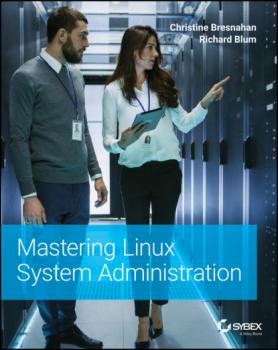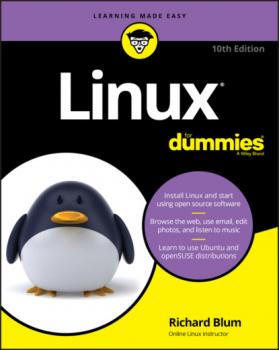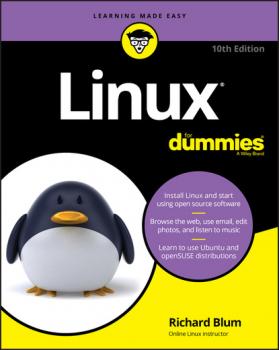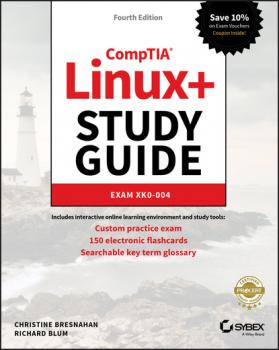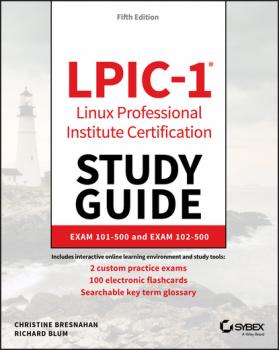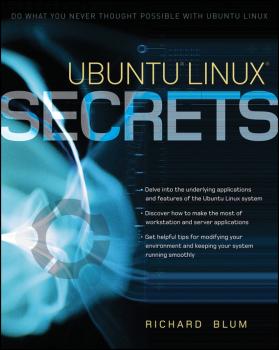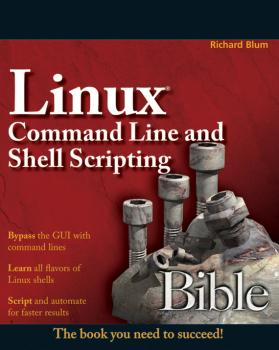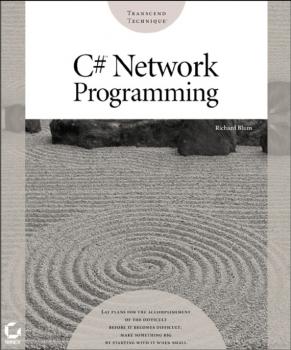Richard Blum
Список книг автора Richard BlumMastering Linux System Administration
Achieve Linux system administration mastery with time-tested and proven techniques In Mastering Linux System Administration , Linux experts and system administrators Christine Bresnahan and Richard Blum deliver a comprehensive roadmap to go from Linux beginner to expert Linux system administrator with a learning-by-doing approach. Organized by do-it-yourself tasks, the book includes instructor materials like a sample syllabus, additional review questions, and slide decks. Amongst the practical applications of the Linux operating system included within, you’ll find detailed and easy-to-follow instruction on: Installing Linux servers, understanding the boot and initialization processes, managing hardware, and working with networks Accessing the Linux command line, working with the virtual directory structure, and creating shell scripts to automate administrative tasks Managing Linux user accounts, system security, web and database servers, and virtualization environments Perfect for entry-level Linux system administrators, as well as system administrators familiar with Windows, Mac, NetWare, or other UNIX systems, Mastering Linux System Administration is a must-read guide to manage and secure Linux servers.
Linux For Dummies
Your step-by-step guide to the latest in Linux Nine previous editions of this popular benchmark guide can’t be wrong! Whether you’re new to Linux and need a step-by-step guide or are a pro who wants to catch up with recent distributions, Linux For Dummies, 10 th Edition has your back. Covering everything from installation to automation, this updated edition focuses on openSUSE and Ubuntu and includes new and refreshed material—as well as chapters on building a web server and creating simple shell scripts. In his friendly, no-jargon style, IT professional and tech higher education instructor Richard Blum draws on more than 10 years of teaching to show you just why Linux’s open source operating systems are relied on to run a huge proportion of the world’s online infrastructure, servers, supercomputers, and NAS devices—and how you can master them too. Study the thinking behind Linux Choose the right installation approach Pick up the basics—from prepping to desktops Get fancy with music, video, movies, and games Whatever your Linux needs—work, fun, or just a hobby—this bestselling, evergreen guide will get you up and coding in the open source revolution in no time at all.
Ubuntu Linux Secrets
The everyday Linux user can easily get overwhelmed by the complexity of the new software that exists when creating an Ubuntu system. This book covers the basics of creating a new system from scratch and explains what software is installed. You’ll take a tour of installing the Ubuntu Linux distribution system in most environments, including nontraditional situations such as dual-boot and text-based installations. Plus, clear explanations of each of the installed applications show you how to get the most out of each application, rather than simply using them as they exist.
Linux Command Line and Shell Scripting Bible
There's a lot to be said for going back to basics. Not only does this Bible give you a quick refresher on the structure of open-source Linux software, it also shows you how to bypass the hefty graphical user interface on Linux systems and start interacting the fast and efficient way?with command lines and automated scripts. You'll learn how to manage files on the filesystem, start and stop programs, use databases, even do Web programming?without a GUI?with this one-stop resource.
C# Network Programming
On its own, C# simplifies network programming. Combine it with the precise instruction found in C# Network Programming, and you'll find that building network applications is easier and quicker than ever. This book helps newcomers get started with a look at the basics of network programming as they relate to C#, including the language's network classes, the Winsock interface, and DNS resolution. Spend as much time here as you need, then dig into the core topics of the network layer. You'll learn to make sockets connections via TCP and «connectionless» connections via UDP. You'll also discover just how much help C# gives you with some of your toughest chores, such as asynchronous socket programming, multithreading, and multicasting. Network-layer techniques are just a means to an end, of course, and so this book keeps going, providing a series of detailed application-layer programming examples that show you how to work with real protocols and real network environments to build and implement a variety of applications. Use SNMP to manage network devices, SMTP to communicate with remote mail servers, and HTTP to Web-enable your applications. And use classes native to C# to query and modify Active Directory entries. Rounding it all out is plenty of advanced coverage to push your C# network programming skills to the limit. For example, you'll learn two ways to share application methods across the network: using Web services and remoting. You'll also master the security features intrinsic to C# and .NET–features that stand to benefit all of your programming projects.
